Some five years after ‘WO’s’ 3 Litre model had first fired up in the garage of a Baker Street Mews, it was obvious that there was a demand for more power both for the sporting motorist and also to cope with the ever grander coachwork fitted to the more formal cars. A new 4 1/2 litre car was developed and the prototype, ‘The Sun’, was first driven by ‘WO’ with A F C Hillstead, for the trip to Le Mans in June 1924. On that occasion ‘WO’ had the opportunity to compare his new car with the Rolls-Royce prototype, the ‘New Phantom’, also on test, and a decision was taken there and then to increase the engine size of the new model to a mighty 6 1/2 litres. Feverish activity saw the new chassis and engine developed in time to launch the 6 1/2 litre car on Stand 224 at The Olympia Motor Exhibition in October 1925. The straight six engine actually had a capacity of 6,597 cc, the chassis was very similar to the 3 litre but with enhanced braking, a more substantial differential and a plate clutch replaced the rather Edwardian cone clutch of the 3 litre. The new car had 3mph to 80mph flexibility in top gear, comparable with Rolls-Royce equivalents, and went on to be developed into the more sporting Speed Six which positively shone in long distance endurance racing. Woolf Barnato and Tim Birkin stormed to first place at Le Mans in 1929 at an average speed of 73.62mph and in 1930 the fearless Barnato, this time accompanied by Kidston, repeated the performance in the same car with Clement and Watney finishing close behind in second place. A legend was born and The Speed Six therefore has a unique place in motor racing history. Bentley records suggest this car left the factory in October 1929 and registration records confirm first licensing in May 1930. At that time the proud new owner was one H.E. Ault and the car carried lightweight Weymann saloon coachwork by Hoyal. During the 1950’s the car spent much of its time in the south of England and was acquired by Henry John Askew of Berwick-upon-Tweed in 1969. Edwin C Jameson Junior was to acquire the car in June 1976. The car comes with a substantial quantity of bills/engineers reports, etc from vintage Bentley specialists, McKenzie-Guppy & Sons, indicating that it has been the subject of an extensive engine and mechanical rebuild including the fitting of a counter-balanced crankshaft and new connecting rods as recently as 1988. Extensive further work to most mechanical aspects of the car are detailed within the McKenzie-Guppy invoices. At some stage the vehicle has been fitted with the present tourer coachwork, believed to be by Meynell & Phillips. The car is now superbly presented, naturally in British Racing Green livery, with green fabric-bodied Le Mans-style coachwork and a Le Mans fuel tank. The car has complementing green leather upholstery and carpets. Attractive period features include the engine-turned dashboard, fold-flat windscreen with twin aeroscreens and the car is equipped with Lucas ‘bullseye’ headlamps. The car sits on 600 x 21 in. tyres on distinctively chrome-plated wire wheels. A sporting Bentley would not be complete without the twin leather-strapped bonnet. The car is equipped with a single rear-mounted spare wheel and the weather equipment is in black duck with matching hood envelope. The speedometer reading of 194 miles perhaps suggests that the car has seen minimal use since the extensive mechanical restoration by McKenzie-Guppy & Sons. This most elegant sporting ‘W.O.’ Bentley comes with a Swansea V5 registration document, the aforementioned McKenzie-Guppy invoices and an old style buff log book recording the history back to 1951.
Some five years after ‘WO’s’ 3 Litre model had first fired up in the garage of a Baker Street Mews, it was obvious that there was a demand for more power both for the sporting motorist and also to cope with the ever grander coachwork fitted to the more formal cars. A new 4 1/2 litre car was developed and the prototype, ‘The Sun’, was first driven by ‘WO’ with A F C Hillstead, for the trip to Le Mans in June 1924. On that occasion ‘WO’ had the opportunity to compare his new car with the Rolls-Royce prototype, the ‘New Phantom’, also on test, and a decision was taken there and then to increase the engine size of the new model to a mighty 6 1/2 litres. Feverish activity saw the new chassis and engine developed in time to launch the 6 1/2 litre car on Stand 224 at The Olympia Motor Exhibition in October 1925. The straight six engine actually had a capacity of 6,597 cc, the chassis was very similar to the 3 litre but with enhanced braking, a more substantial differential and a plate clutch replaced the rather Edwardian cone clutch of the 3 litre. The new car had 3mph to 80mph flexibility in top gear, comparable with Rolls-Royce equivalents, and went on to be developed into the more sporting Speed Six which positively shone in long distance endurance racing. Woolf Barnato and Tim Birkin stormed to first place at Le Mans in 1929 at an average speed of 73.62mph and in 1930 the fearless Barnato, this time accompanied by Kidston, repeated the performance in the same car with Clement and Watney finishing close behind in second place. A legend was born and The Speed Six therefore has a unique place in motor racing history. Bentley records suggest this car left the factory in October 1929 and registration records confirm first licensing in May 1930. At that time the proud new owner was one H.E. Ault and the car carried lightweight Weymann saloon coachwork by Hoyal. During the 1950’s the car spent much of its time in the south of England and was acquired by Henry John Askew of Berwick-upon-Tweed in 1969. Edwin C Jameson Junior was to acquire the car in June 1976. The car comes with a substantial quantity of bills/engineers reports, etc from vintage Bentley specialists, McKenzie-Guppy & Sons, indicating that it has been the subject of an extensive engine and mechanical rebuild including the fitting of a counter-balanced crankshaft and new connecting rods as recently as 1988. Extensive further work to most mechanical aspects of the car are detailed within the McKenzie-Guppy invoices. At some stage the vehicle has been fitted with the present tourer coachwork, believed to be by Meynell & Phillips. The car is now superbly presented, naturally in British Racing Green livery, with green fabric-bodied Le Mans-style coachwork and a Le Mans fuel tank. The car has complementing green leather upholstery and carpets. Attractive period features include the engine-turned dashboard, fold-flat windscreen with twin aeroscreens and the car is equipped with Lucas ‘bullseye’ headlamps. The car sits on 600 x 21 in. tyres on distinctively chrome-plated wire wheels. A sporting Bentley would not be complete without the twin leather-strapped bonnet. The car is equipped with a single rear-mounted spare wheel and the weather equipment is in black duck with matching hood envelope. The speedometer reading of 194 miles perhaps suggests that the car has seen minimal use since the extensive mechanical restoration by McKenzie-Guppy & Sons. This most elegant sporting ‘W.O.’ Bentley comes with a Swansea V5 registration document, the aforementioned McKenzie-Guppy invoices and an old style buff log book recording the history back to 1951.

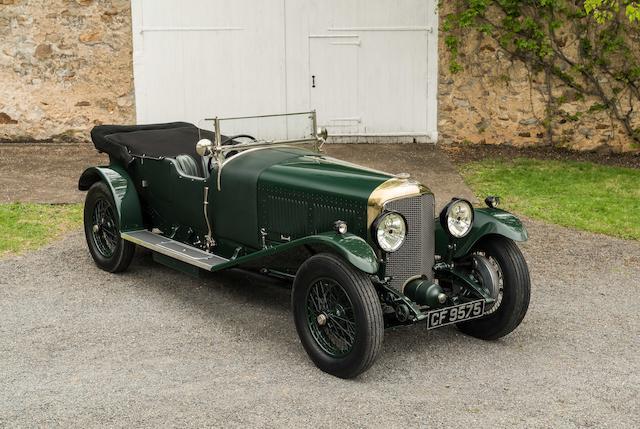

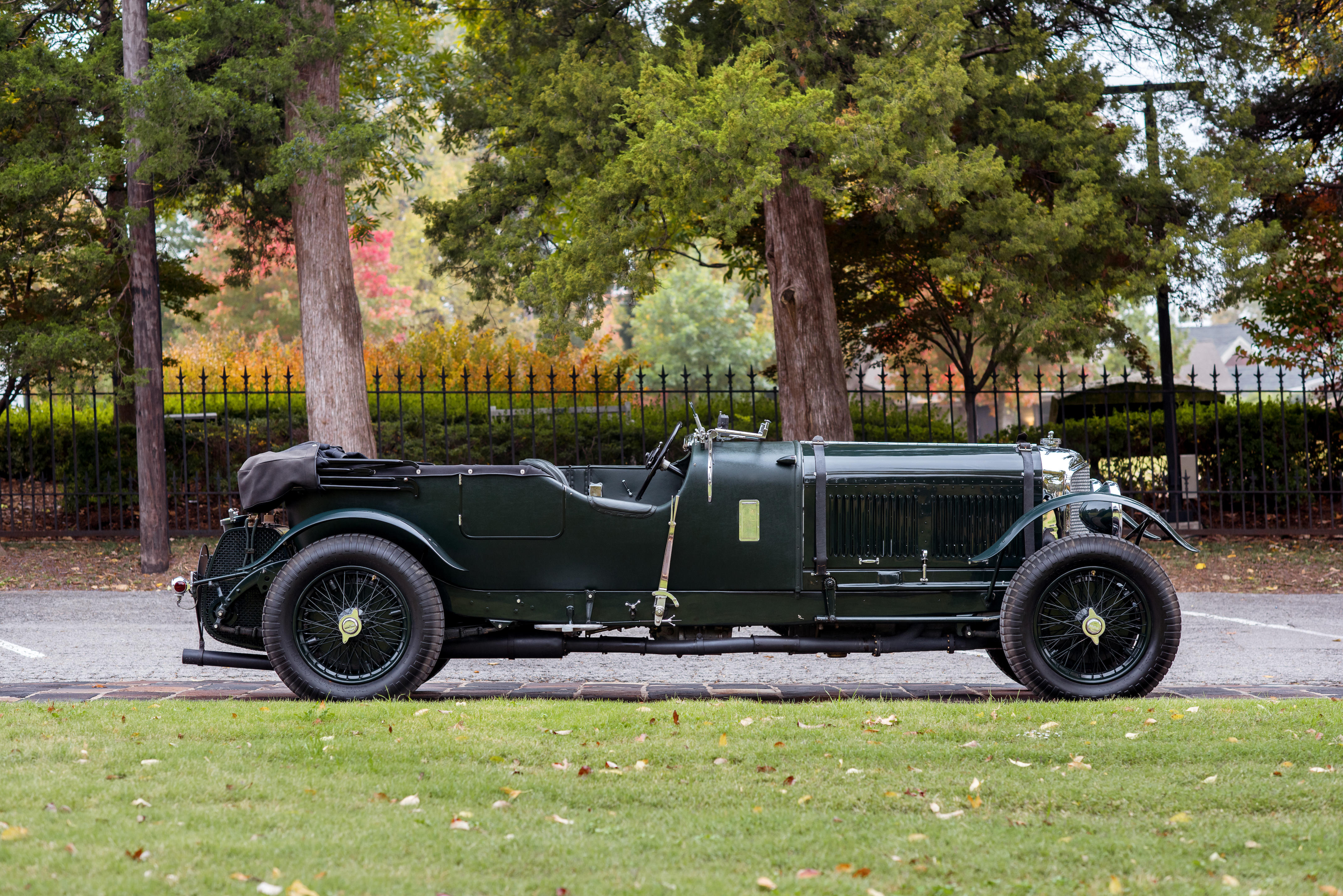
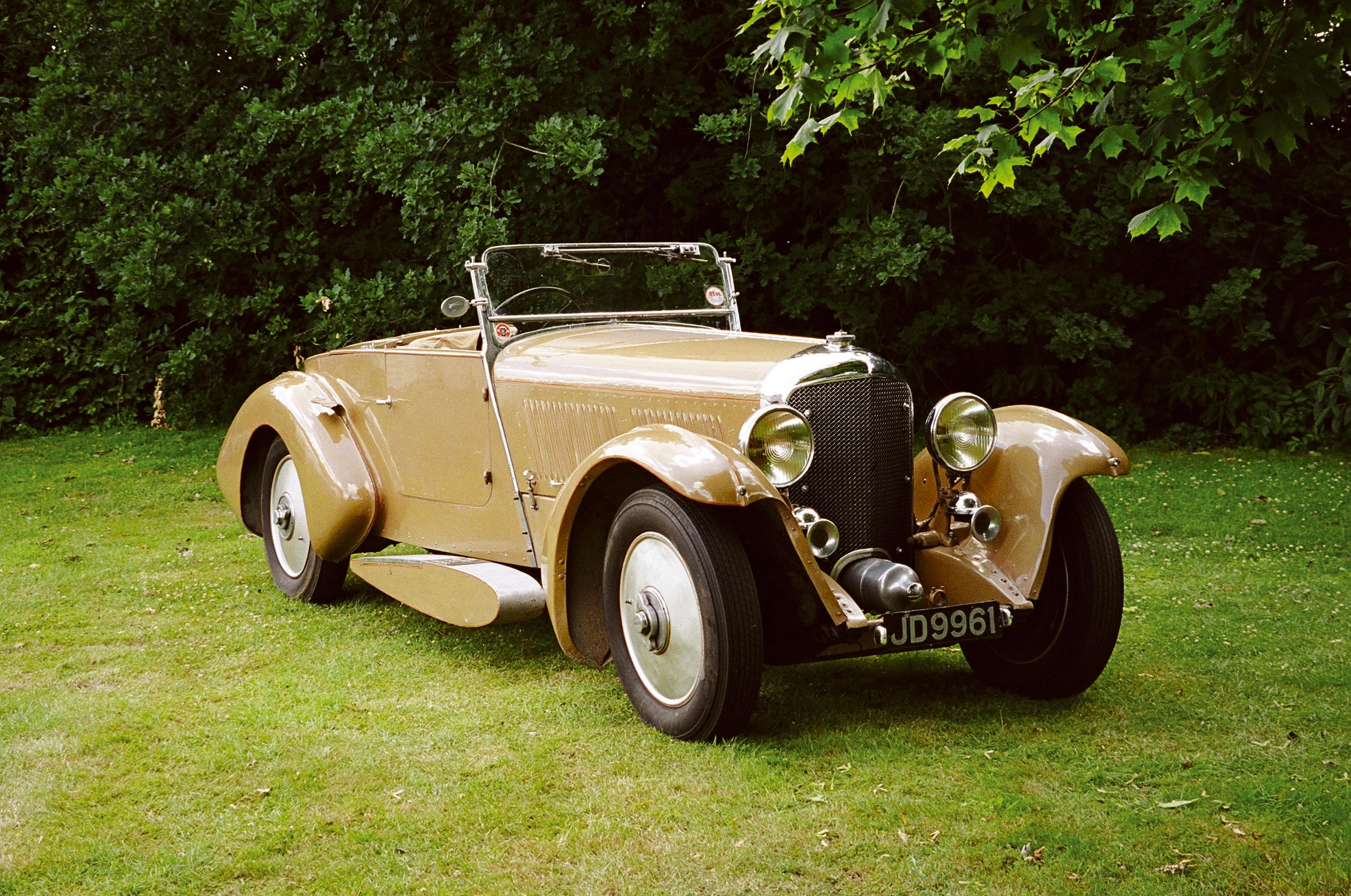




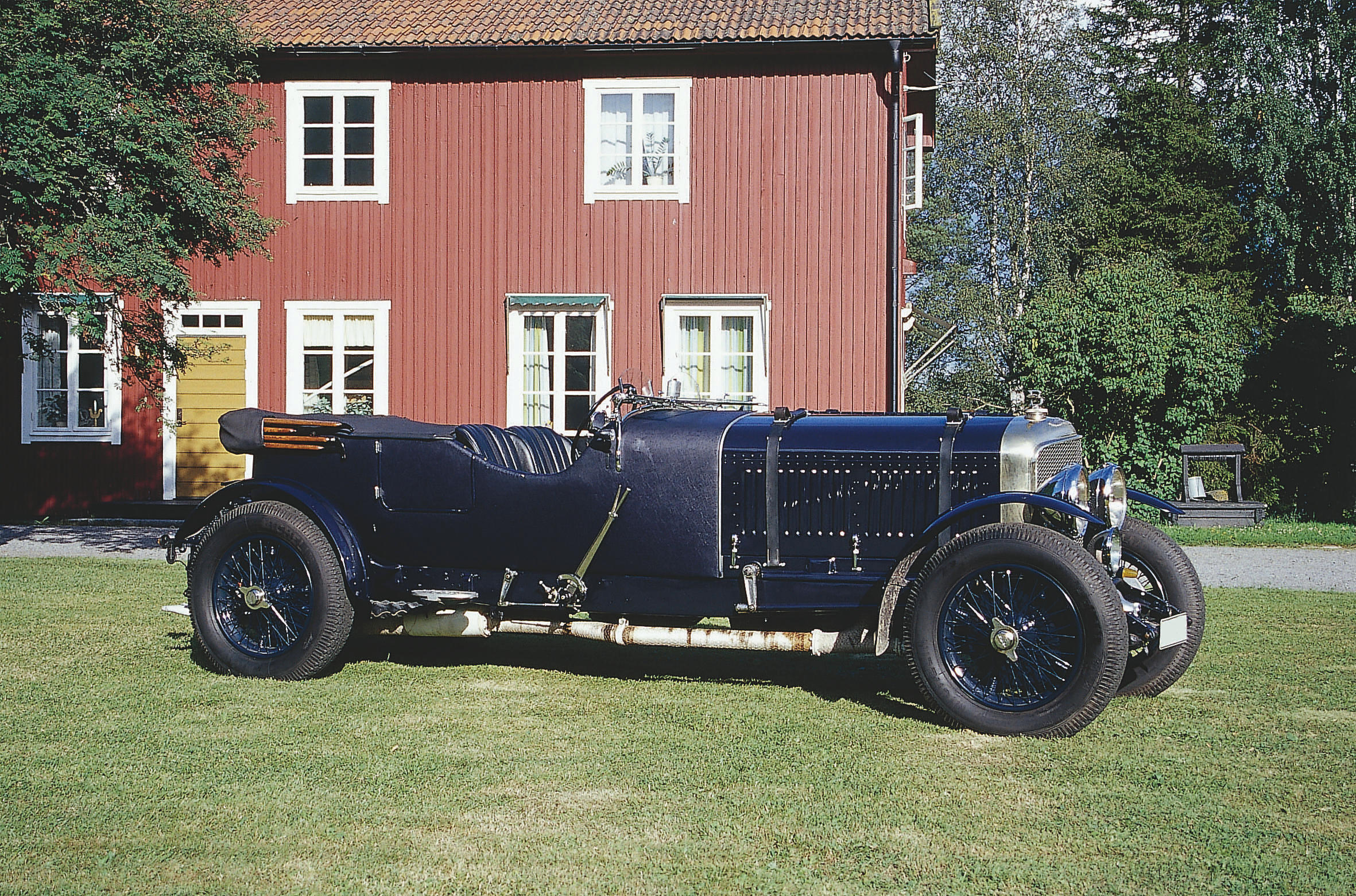

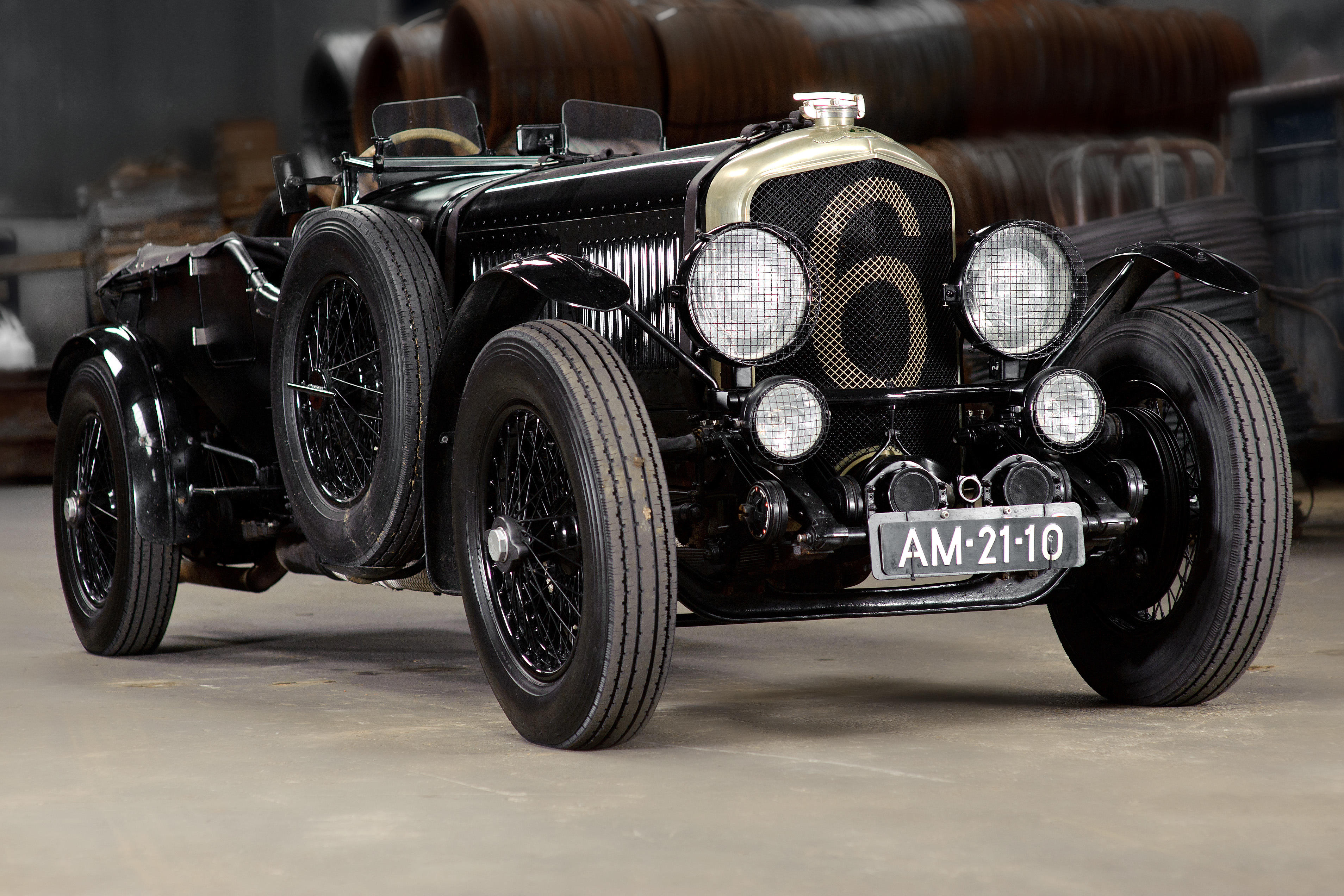



Testen Sie LotSearch und seine Premium-Features 7 Tage - ohne Kosten!
Lassen Sie sich automatisch über neue Objekte in kommenden Auktionen benachrichtigen.
Suchauftrag anlegen